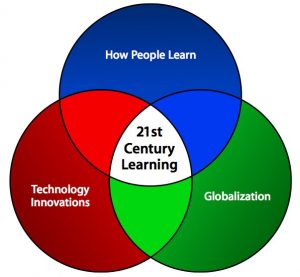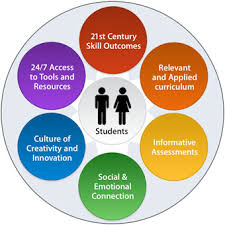PCK and TPACK – best practices
When reading these articles, it really struck me that these authors really get it. For a classroom or a lesson to be effective, the teacher has to not only know and be able to interact with the content, but also with the methodology that is most effective to the context of the topic. For many years I taught high school math, and while I could explain well, I was never able to make it interesting or relevant to the students. I wasn’t immersed in the context.
For science, and in particular, biology that has not been a problem for me. I have been interested in the world and creatures around me for as long as I can remember, and still find it fascinating. To use anecdotes, analogies, and methodologies to make it interesting has just been an extension of what I already want to do. While I appreciate the value of the PCK and TPACK model, I wonder if there is a lack of focus on the individual teacher as well. Putting theory and practice together while combining TPC knowledge is a great skill to have and will undoubtedly improve the engagement and learning in the class. I would argue, however, that a teacher with a love for their students and their course while lacking some framework may be just as effective if not more so, than a trained teacher without that love. My favourite topics always seem to go over the best regardless of the methodologies used for them or other topics.
One activity I have done regularly is for the homeostasis (human body systems) unit in biology 11. For this, I have developed a number of different medical scenarios or case studies. Each group is assigned a “patient” with a medical situation that they have to diagnose and develop a treatment plan for. They needed to research symptoms, request diagnostic tests and technologies, ask questions and interact with the patient and doctor via e-mail (it’s me) and create a tactful bedside manner report on what is ailing them and what they are going to do about it. In addition to learning the body systems, they also learn many other skills – collaboration, responsibility, deduction, and technological skills like research, organization, and layout. For the most part they are very engaged and thorough. I believe this activity meets the criteria for the TPCK overlap, as the technology supports the learning of the content in a way that engages the students creatively and with collaboration.
I have also begun using WIKIs and digital artifacts as ways to have students construct their knowledge. Once most of the topics have been addressed at least once, I think I would like to go the next step of designing their knowledge – give my students choices to design games or activities that demonstrate understandings of the concepts. In ETEC510, we read a number of articles (Kafai, 2006; Kafai & Resnick, 1996; Brennan & Resnick, 2013; Kalantzis & Cope, 2010; Mouza & Lavigne, 2013) that emphasize the power of design for learning – first for the teacher, but also for our students. Mishra and Koeler (2006) also used case studies from a MET program designing course that further elaborate this point. Mouza and Lavigne suggest a needed shift from children as consumers to children as designers, writing “as young people design interactive media, they go through an iterative process of imagining, creating, playing, sharing, and reflecting” (p. 11). When learners are most involved is when they contribute the most – to their own learning, to the class, and to society at large.
When I first read those articles, I wrote “Playing is fine for younger kids learning motor and social skills, but high school must be more serious- there’s content, information, and skills to develop. Can students really be trusted to learn for themselves? What about the basic knowledge needed for future courses and the workplace? Life skills? Budgeting, tax returns, giving out change? Safety? Our bodies? The 3 R’s? What if it’s not what I expected, or wanted? I must confess I REALLY don’t know. I’m not even sure if I have any ideas. I think I need to ask my kids! Some small part of me is also saying “ask your students – talk to them – give them some say in their education”. I think I will. I have no idea where this will lead, it’s kind of scary, but maybe, just maybe, worth it?”
After reflection, I think I’m still in a similar place. I still don’t have the answers, but my knowledge and willingness to learn and try things continues to grow, and I still believe it’s worth it!
Questions for Discussion or Reflection:
- Is being outside your comfort zone a good place to be? If we are not the intuitive knowledgeable experts that TPACK is seeking, does this mean we should stick to more traditional methodologies?
- Interestingly, Apple’s philosophy appears quite similar as shown by their stated goals for Apple Classrooms of Tomorrow – Today. How does this framework align with TPACK? Is it a good thing for commercial interests to take this close of an interest in educational pedagogy? What biases or influences would they bring on teachers or into classrooms?


Figure 1: Three major influences on 21st century learning. Reprinted from Apple Classrooms of Tomorrow—Today: Learning in the 21st Century by ACOT2, 2008. Retrieved from http://ali.apple.com/acot2/global/files/ACOT2_Background.pdf.
Figure 2: Six Design Principles.
Reprinted from Apple Classrooms of Tomorrow—Today: Learning in the 21st Century by ACOT2, 2008. Retrieved from http://ali.apple.com/acot2/global/files/ACOT2_Background.pdf.
- Brennan, K. & Resnick, M. (2013). Chapter 17: Imagining, Creating, Playing, Sharing, Reflecting: how online community supports young people as designers of interactive media.In C. Mouza and N. Lavigne (eds.), Emerging Technologies for the Classroom, Explorations in the Learning Sciences, Instructional Systems and Performance Technologies. New York: Springer Science &Business. DOI 10.1007/978-1-4614-4696-5_17
- Kafai, Y. B., & Resnick, M. (Eds.). (1996). Constructionism in practice: Designing, thinking, and learning in a digital world. Hillsdale, NJ: Erlbaum.
- Kafai, Y. (2006).Playing and making games for learning: Instructionist and constructionist perspectives. Games and Culture. 1(1). 36-40.
- Kalantzis, M. & Cope, B. 2010.The teacher as designer: Pedagogy in the new media age. E-learning and Digital media 7(3). 200-222.
- Mouza, C. and Lavigne, N. (eds). 2013.Chapter 1: Emerging Technologies for the Classroom. Explorations in the Learning Sciences, Instructional Systems, and Performance Technologies. New York: Springer Science + Business Media.
- Shulman, L.S. (1986). Those who understand: Knowledge growth in teaching. Educational Researcher, 15(2), 4 -14.
- Shulman, L.S. (1987). Knowledge and teaching. The foundations of a new reform. Harvard Educational Review, 57(1)1-23.
- Mishra, P., & Koehler, M. (2006). Technological pedagogical content knowledge: A framework for teacher knowledge. The Teachers College Record, 108(6), 1017-1054.
Dear David,
Thank you for the indepth discussion about developing life-long learners.
It can be difficult to release the teacher control. Self-regulated learning is a muscle and requires explicit instructions and practice. I remember in high school, there were many students who struggled with AP courses because the lack of self-discipline and an effective inquiry skillset. It is unrealistic to expect learners to be able to delve into new types of learning without scaffolding. To some degree, I disagree with K-12 schools that only employ IB at the high school level. Inquiry-based learning is a pedagogy that require students to fluently use research skills. This is a development happens gradually and requires constant practice.
To connect this idea to your questions, in this case, students are not pushed outside of their comfort zone, instead, they are thrown far out to unfamiliar territory without cognitive competencies nor practical skillsets. Rather, I believe that there is space for a mix of traditional and unconventional methods.
Alice
Thanks for your response, Alice. I have noticed that when students are introduced to new ways of learning first at the high school level, that there is a lot of resistance to it. They have not had success with this before, and are unfamiliar with the skills necessary for it. Scaffolding is critical to help ease them into it. Often, it is the strongest students with the highest grades who are the most resistant, as they have learned well traditionally. A blend of methodologies is the best way to reach all students effectively.